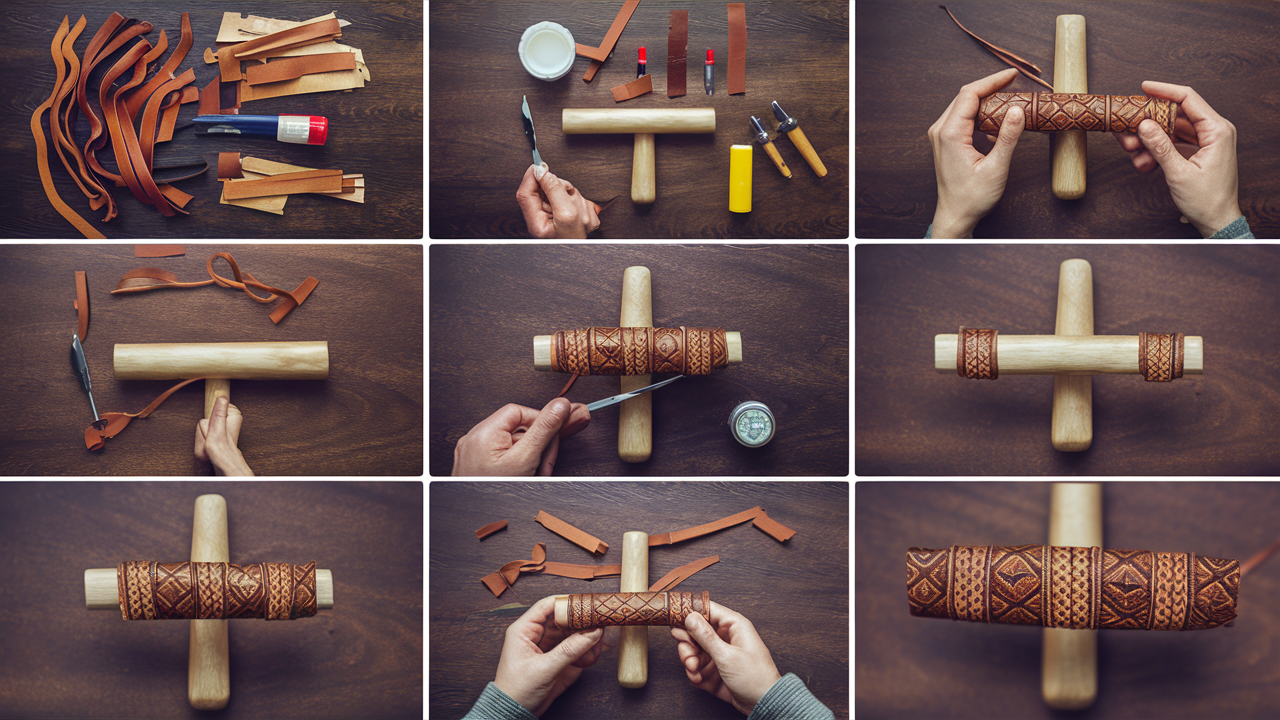How To Leather Wrap A Handle?
Leather wrapping a handle involves covering it with strips or pieces of leather to provide a more comfortable and secure grip, enhancing control, comfort, and durability in various tools and equipment such as knives, swords, hammers, and baseball bats. The process offers benefits, including improved grip in challenging conditions, increased comfort during prolonged use, protection against wear and tear, and an added touch of style and elegance. From classic spiral wraps to intricate basket weaves, the techniques for leather wrapping handles are diverse and customizable. So, let’s dive into this tutorial to learn different methods and unleash your creativity in crafting beautifully wrapped handles.
Types of Leather for Wrapping Handles
Cowhide
Cowhide leather is durable and readily available, making it a popular choice for handle wrapping. It offers a balance of strength and flexibility, ideal for everyday use.
Goatskin
Goatskin leather is known for its softness and pliability, providing a comfortable grip. It’s often used in applications where comfort is paramount, such as knife handles or golf club grips.
Sheepskin
Sheepskin leather is prized for its luxurious feel and excellent moisture-wicking properties. It’s a great choice for handles used in damp or sweaty conditions.
Exotic Leathers
Exotic leathers, such as snakeskin or alligator hide, can be used for handle wrapping for a unique and luxurious touch. These leathers offer distinctive textures and patterns, perfect for making a statement.

Techniques for Leather Wrapping
Basic Spiral Wrap
The basic spiral wrap involves wrapping the leather around the handle in a continuous spiral pattern. It’s simple yet effective, and it provides a comfortable grip.
Basket Weave
The basket weave technique creates a pattern resembling woven baskets, offering both grip and visual appeal. It involves twisting the leather strips over and under each other to achieve the desired look.
Turk’s Head Knot
The Turk’s Head knot is a decorative knot often used in leatherworking. It adds texture and style to the handle wrap, making it stand out.
Diamond Stitch
The diamond stitch involves stitching the leather in a diamond pattern, providing grip and a unique aesthetic. It’s a great option for adding extra flair to your handle wrap.
Step-by-Step Guide to Leather Wrapping in Basket Weave
Step 1: Preparation
Start by gathering all the necessary materials, including leather strips, adhesive or small tacks, scissors, and any other necessary tools. Ensure your leather strips are cut to the appropriate length and width for your handle.
Step 2: Secure the Starting Point
Begin by securing one end of the leather strip to the handle using adhesive or a small tack. This will prevent it from slipping or unravelling as you begin wrapping.
Step 3: Create the Weave
Weave the loose end of the leather strip over and under the handle, alternating with each pass to create the basket weave pattern. Make sure to keep the weave tight and even as you progress along the handle.
Step 4: Continue Weaving
Continue weaving the leather strips in this manner until you reach the end of the handle or the desired length of the wrap. Be sure to maintain the basket weave pattern throughout the entire process.
Step 5: Secure the End
Once you’ve completed the wrapping, secure the end of the leather strip using adhesive or by tacking it in place. Trim any excess leather if necessary to ensure a neat finish.
Step 6: Finishing Touches
Inspect the wrapped handle to ensure that the weave is tight and secure. If desired, apply a leather finish or conditioner to protect the wrap and enhance its appearance.
Step 7: Enjoy Your Handiwork
Your basket weave leather-wrapped handle is now complete! Enjoy the improved grip and stylish look it adds to your tool or equipment.
Remember, practice makes perfect, so don’t be discouraged if your first attempt isn’t flawless. With time and patience, you’ll master the art of leather wrapping in basket weave style.
Tips and Tricks
Ensuring Evenness and Tightness
Maintaining consistent tension throughout the wrapping process ensures an even and tight weave.
Using Proper Tools
Invest in quality leatherworking tools such as awls, needles, and thread to achieve professional results.
Finishing and Conditioning
Once the wrap is complete, trim any excess leather and apply a leather finish or conditioner to protect it from wear and tear.
Conclusion
Wrapping a handle in leather is a rewarding skill that combines form and function. Whether you’re looking to improve grip, protect your tools, or add a touch of style, mastering the art of leather wrapping opens up a world of possibilities. So why not try it and elevate your equipment to the next level?
FAQs
How long does it take to leather wrap a handle?
The time required depends on the wrapping technique’s complexity and the handle’s size. Simple wraps can be completed in minutes, while more intricate designs may take several hours.
Can any leather be used for handle wrapping?
While most types of leather can be used, choosing a variety that offers the right balance of durability, flexibility, and grip for your specific application is essential.
Is leather wrapping only for aesthetic purposes?
No, leather wrapping serves both functional and aesthetic purposes. It enhances grip, provides protection, and adds a stylish touch to the handle.
Do I need specialised tools for leather wrapping?
While specialized tools can make the process easier, basic tools such as scissors, adhesives, and a ruler are sufficient for many wrapping techniques.
Can I remove and replace a leather wrap once it’s applied?
Yes, depending on the adhesive used, removing and replacing a leather wrap is possible if needed. However, it’s essential to take care during removal to avoid damaging the handle underneath.
